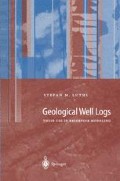Abstract
Perhaps no other field in the oil industry has seen as much progress in the last decade as directional drilling. It was initially developed as a technique to reach reservoir targets not accessible with vertical wells, for example fields — or parts of fields — situated offshore but close to the coastline where a drill rig could be placed. Several fields offshore California and in the Caspian Sea around Baku (Azerbaijan) were developed in the 1930s and 1940s with deviated drilling. With the rapid growth of offshore drilling from platforms, directional drilling became common as a large number of wells were drilled from the same platform into a field. Although geology dictated what objective the wells were targeting, the well trajectory was usually defined in strictly geometric terms. After an initial vertical or steep section of the well, deviation was built up at a prescribed depth and build-up angle, and once the desired deviation was reached the well was on its target, perhaps with a vertical drop-off in its last section where it penetrated the reservoir.
Access this chapter
Tax calculation will be finalised at checkout
Purchases are for personal use only
Preview
Unable to display preview. Download preview PDF.
References
Anderson B, Bonner S, Luling M, Rosthal R (1990) Response of 2-MHz LWD resistivity and wireline tools in dipping beds and laminated formations. Trans 31st Symp Soc Prof Well Log Analysts: Paper A.
Ehlig-Economides CA, Mowat G, Corbett C (1996) Techniques for multibranch well trajectory design in the context of a three-dimensional reservoir model. Soc Petr Eng Petroleum: Paper 35505.
El-Khatib H, Ismail G (1996) Multilateral horizontal drilling problems and solution experienced offshore Abu Dhabi. Soc Petr Eng Petroleum: Paper 36252.
Longbottom J, Herrera I (1997) Multilateral wells can multiply reserve potential. American Oil & Gas Reporter 40: 53–58.
Luling MG, Rosthal RA, Shray F (1994) Processing and modeling 2-Mhz resistivity tools in dipping, laminated anisotropic formations. Trans 35th Symp Soc Prof Well Log Analysts: Paper QQ.
McCann D, Kashkar S, Austin J, Woodhams R, Siddiqui S (1994) Geological steering keeps horizontal well on target. World Oil 215: 37–43.
Mukherjee H, Economides ME (1991) A parametric comparison of horizontal and vertical well performance. Soc Petr Eng Petroleum Formation Evaluation: 209–216.
Poli S, Donati F, Oppelt J, Ragnitz D (1996) Advanced tools for advanced wells: rotary closed loop drilling system-results of prototype field testing. Soc Petr Eng Petroleum: Paper 36884.
Prilliman JD, Allen DF, Lehtonen LR (1995) Horizontal well placement and petrophysical evaluation using LWD. Soc Petr Eng Petroleum: Paper 30549.
Roberts MJ, Kirkwood, A, Bedford J (1998) Real-time geosteering in the Tern field for optimum multilateral well placement. Soc Petr Eng Petroleum: Paper 50663.
Rosthal RA, Young RA, Lovell JR, Buffington L, Arceneaux CL (1995) Formation evaluation and geological interpretation from the resistivity-at-the-bit tool. Soc Petr Eng Petroleum: Paper 30550.
Rosthal RA, Borneman T, Ezell JR, Schwalbach JR (1997) Bear-bit resistivity tool calculates dip real time. Soc Petr Eng Petroleum: Paper 38647.
White J (1995) Geological steering assists cost effective exploitation of marginal reservoirs. Soc Petr Eng Petroleum: Paper 30365.
Author information
Authors and Affiliations
Rights and permissions
Copyright information
© 2001 Springer-Verlag Berlin Heidelberg
About this chapter
Cite this chapter
Luthi, S.M. (2001). Geological Drilling. In: Geological Well Logs. Springer, Berlin, Heidelberg. https://doi.org/10.1007/978-3-662-04627-2_17
Download citation
DOI: https://doi.org/10.1007/978-3-662-04627-2_17
Publisher Name: Springer, Berlin, Heidelberg
Print ISBN: 978-3-662-04629-6
Online ISBN: 978-3-662-04627-2
eBook Packages: Springer Book Archive

